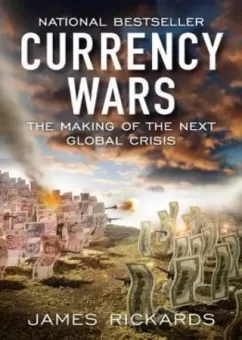Chapter 11
227 Barry Eichengreen is the preeminent scholar on this topic . . . For Eichengreen’s views on the prospects for multiple reserve currencies, see Barry Eichengreen, Exorbitant Privilege: The Rise and Fall of the Dollar and the Future of the International Monetary System, Oxford: Oxford University Press, 2011; and Barry Eichengreen, “The Dollar Dilemma: The World’s Top Currency Faces Competition,” Foreign Affairs, September/October 2009: 53– 68.
236 “Countries that left gold were able to reflate their money supplies . . .” Ben Bernanke, “The Macroeconomics of the Great Depression: A Comparative Approach,” Journal of Money, Credit and Banking 27 (1995): 1–28.
238 In support of his thesis that gold is in part to blame . . . Bernanke, op. cit. Bernanke’s specific model states:
M1 = (M1/BASE) × (BASE/RES) × (RES/GOLD) × PGOLD × QGOLD
Where
M1 = M1 money supply (money and notes in circulation plus commercial bank deposits),
BASE = monetary base (money and notes in circulation plus reserves of commercial banks),
RES = international reserves of the central bank (foreign assets plus gold reserves), valued in domestic currency,
GOLD = gold reserves of the central bank, valued in domestic currency
= PGOLD × QGOLD,
PGOLD = the official domestic currency price of gold, and
QGOLD = the physical quantity (for example, in metric tons) of gold reserves.
Pages: 1 2 3 4 5 6 7 8 9 10 11 12 13 14 15 16 17 18 19 20 21 22 23 24 25 26 27 28 29 30 31 32 33 34 35 36 37 38 39 40 41 42 43 44 45 46



